What makes a great leader, explained in eight counterintuitive charts
A couple of years after starting my most recent company, I had a scary realization. I noticed that by the time the business had grown to a hundred employees, my day-to-day role had gone from “guy who decides and builds things” to “guy who manages other people who decide and build things”—and I had no idea how to do that.
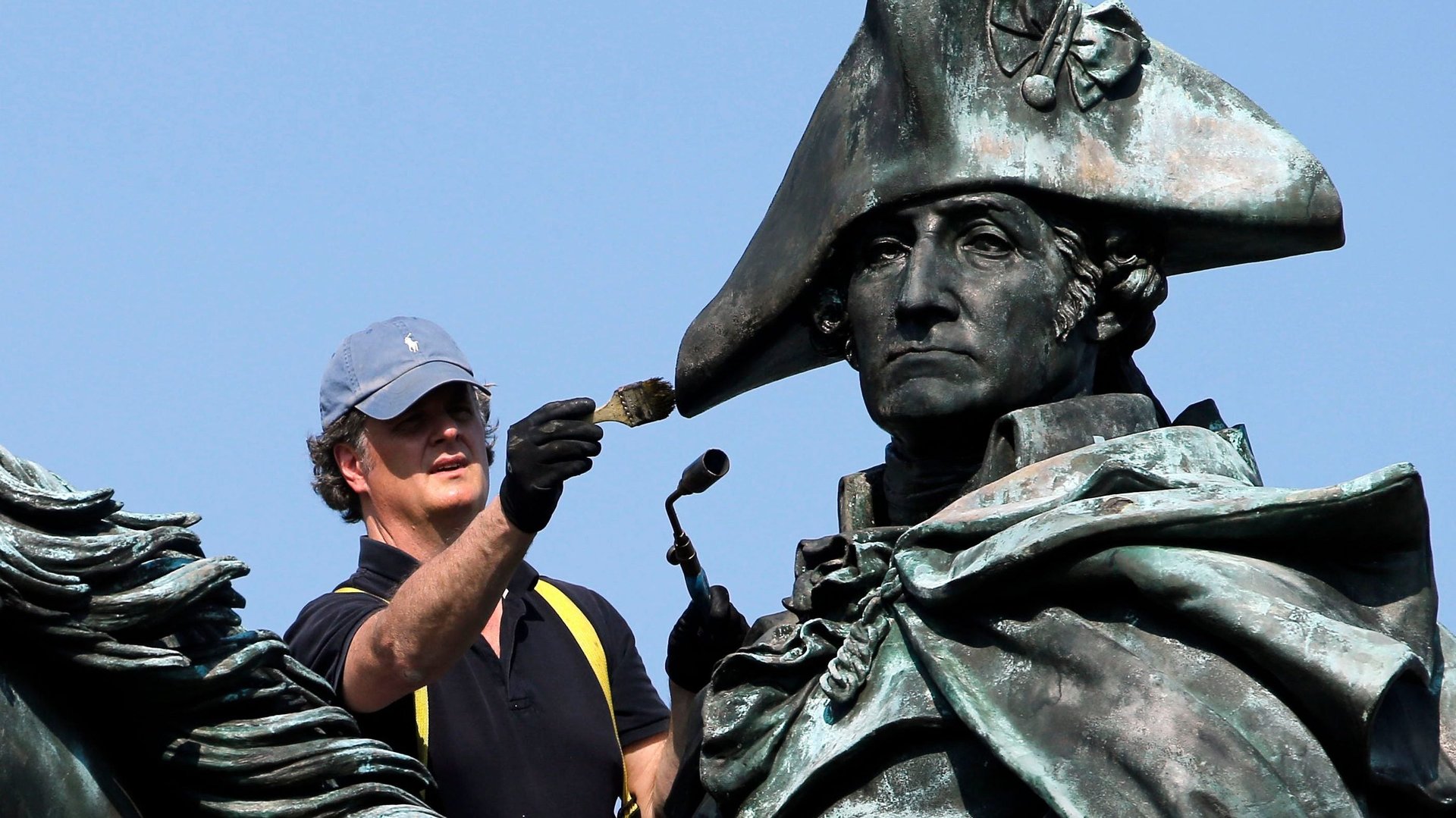

A couple of years after starting my most recent company, I had a scary realization. I noticed that by the time the business had grown to a hundred employees, my day-to-day role had gone from “guy who decides and builds things” to “guy who manages other people who decide and build things”—and I had no idea how to do that.
As a reporter who’d found himself wearing an ill-fitting entrepreneur’s costume, over the years I’d used journalism as an excuse to learn what I needed to do to be a better business builder. So when I realized that my new job was to enable teamwork, I started studying the stories of groundbreaking teams in history, interviewing leaders of great teams today, and reading reams of academic studies on human collaboration.
And I found that a lot of the common wisdom we have about working together is wrong. For decades, we’ve conflated old studies about being comfortable at work with being innovative at work. (They’re not correlated!) We’ve decided that leaders should be one thing, when the leaders of the most incredible teams in history are quite another. We’ve carved best practices around culture, values, unity, and diversity into stone tablets without thinking hard about whether those practices actually belong in the stone age.
All this research led to my new book Dream Teams. Here are eight counterintuitive lessons I learned in the process of writing it.:
Flexible Visionaries
Amazon’s Jeff Bezos got it right when he famously said, of his corporate strategy, “We are stubborn on vision. We are flexible on details.” It turns out that this is a powerful combination. Leaders who can motivate their teams to work toward a grand shared vision, but who encourage their teams to adapt in order to get there, are the ones who change the world, history shows:
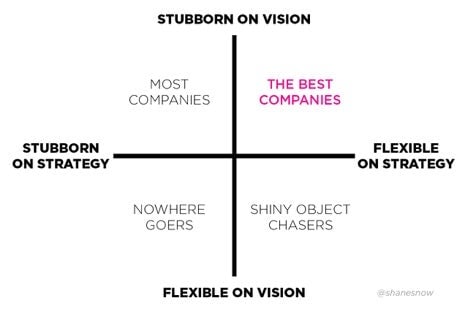
Opinionated Adapters
But the world’s most successful leaders are not just flexible. They’re opinionated, too; that’s how they convince us to follow them into the unknown, even when they change their minds. We conflate strength in leadership with being stalwart and stoic—but it turns out that when it comes to problem solving and decision-making, changing your mind in light of new information, plus the ability to get people on board, is a magical combination:
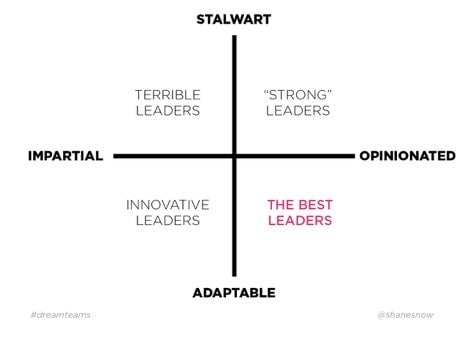
Ego-Free Fighters
If we’re willing to be flexible and change, our teams can make use of the thing that makes teams smarter than their smartest member: cognitive friction. This means that the best teams are able to smash different ideas and diverse ways of thinking together. In other words, they’re willing to change and fight:
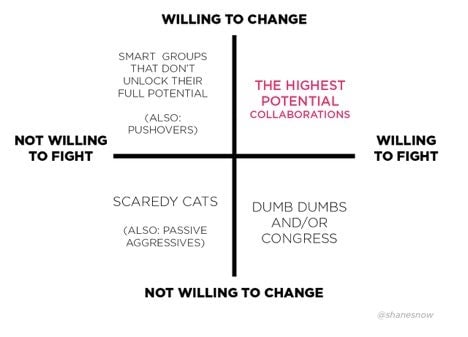
Intellectually Humble
The ancient Greeks said that virtue was the mean between two vices. If being stubborn and unwilling to change is a vice, then its opposite is being too willing to change—gullible even. The virtue in the middle of these two is called Intellectual Humility:
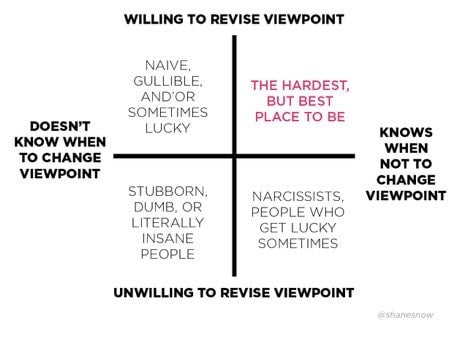
Different And United
The kind of team that can have a successful battle between viewpoints requires cognitive diversity—different heads with different things inside of them. These teams, by nature, will be made of people with different personal opinions and values. Research shows that, contrary to decades of popular misconception, if a team has a strong purpose, vision, and shared goals, it doesn’t need shared values (beyond, you know, being honest and not killing each other) in order to be great. In fact, diverging values are correlated with the kind of cognitive diversity that gives the most innovative teams their great potential:
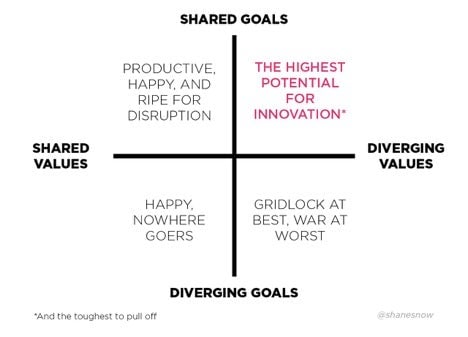
Supportive Adversaries
Of course, those diverse teams need to keep the relationships between them from boiling over—the cognitive friction that they leverage from their cognitive diversity needs to always be about ideas, and not personal. Therefore, the ideal team player is one who can provide full personal and emotional support for her teammates, while adding different ideas and cognitive friction:
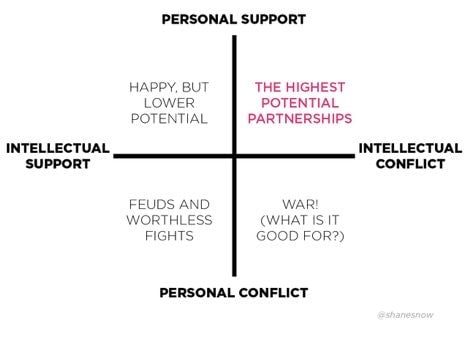
Angelic Troublemakers
The great civil rights activist Bayard Rustin said that every community needs “angelic troublemakers” to push us to see what we need to see, and to go further than we think we can go. Teams that get along well often find themselves in a position of not enough cognitive friction. And that’s where it pays to invite a little trouble into their thinking process:
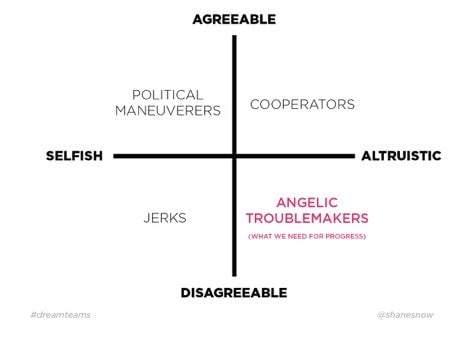
Skeptical Optimists
Finally, to change the world, we need to believe that a better future is possible. That’s optimism. However, to achieve that balance of cognitive friction and intellectual humility, it pays to combine that optimism with skepticism. No, these aren’t opposites. Skepticism is not taking everything at face value. If you believe we can make a brighter future, but you don’t accept everything you see, you might just be the teammate the world needs:
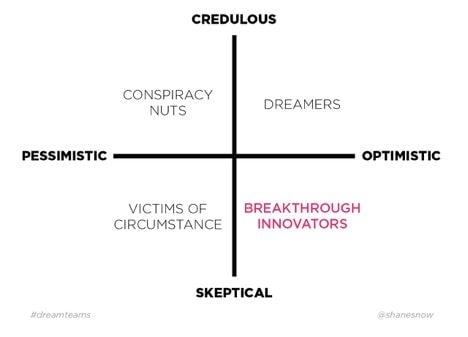
Shane Snow is founder-at-large at Contently and author of Dream Teams.